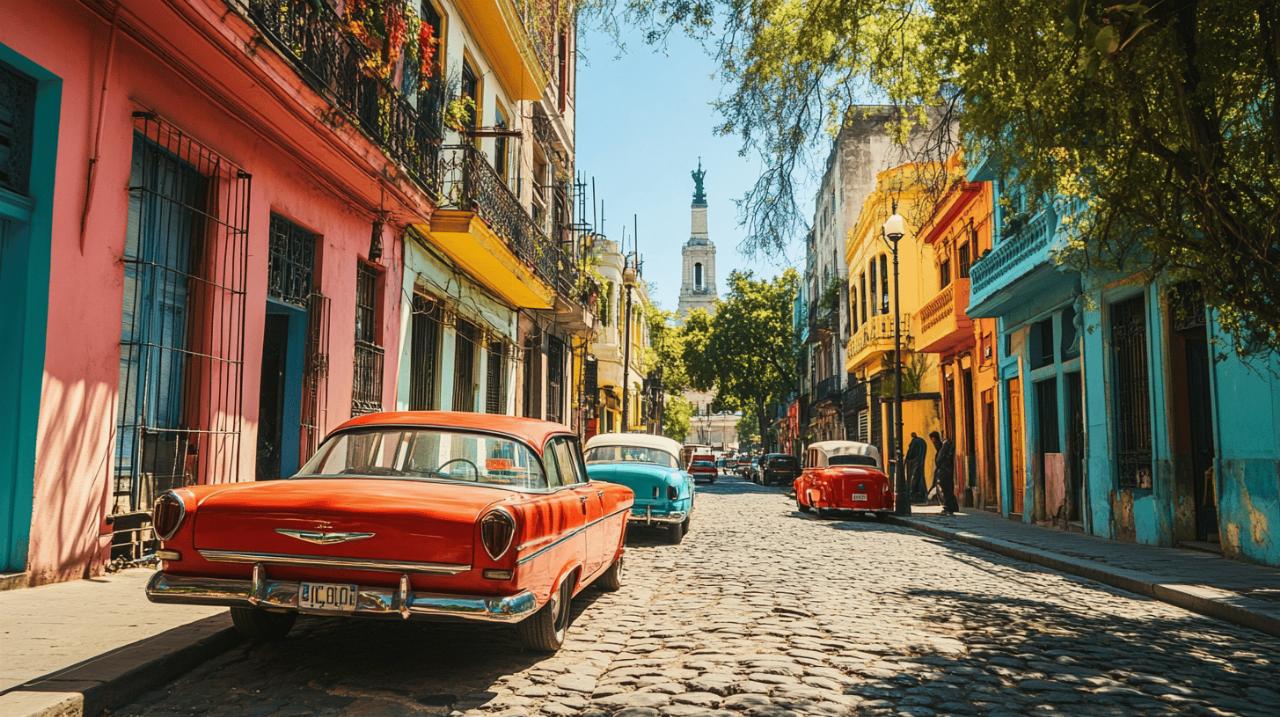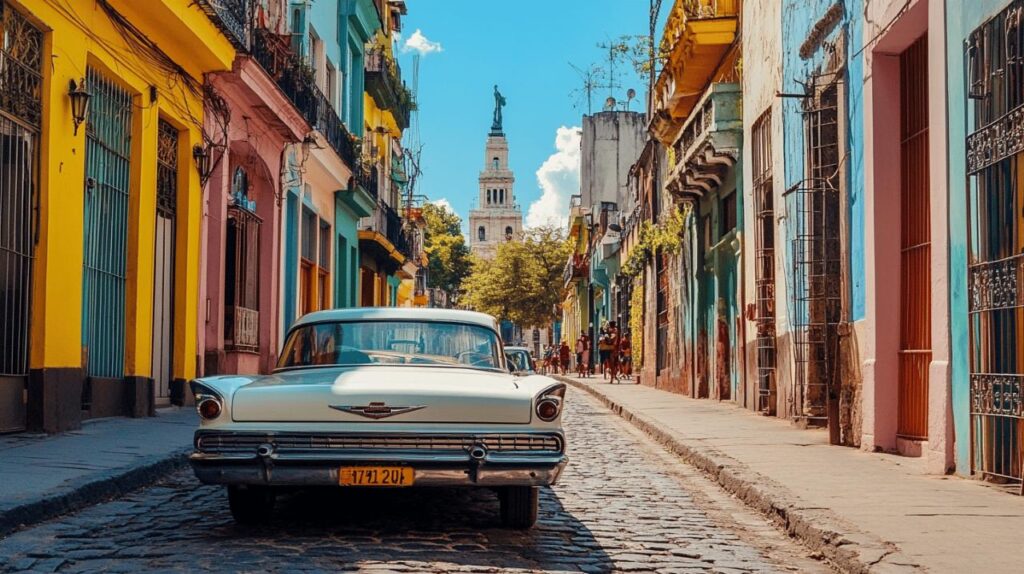Exploring the vibrant city of Buenos Aires and the stunning landscapes of Argentina offers an unforgettable experience. While public transportation serves the city well, venturing beyond the urban centre calls for the freedom that only a rental car can provide. This guide will help you navigate the process of renting a car in Buenos Aires with confidence and ease.
Planning your car rental in buenos aires
Proper preparation is essential before you arrive in Argentina. The car rental market in Buenos Aires offers numerous options, but prices and quality can vary significantly. Recent industry reports from Kammann Automobile indicate that rental costs typically range from USD $65-80 per day for a small sedan, with weekly rentals averaging between US$450-550. Larger vehicles can exceed US$700 per week, so budgeting accordingly is crucial.
Researching reliable rental companies
Start by researching reputable car rental firms well in advance of your trip. DiscoverCars is widely recommended for comparing prices and finding the best deals across multiple companies. Established international agencies like Hertz, Avis, and Enterprise maintain a strong presence in Buenos Aires, operating from both Ezeiza International Airport (EZE) and Jorge Newbery Airport (AEP). Local options such as Localiza and Rentacar also offer competitive rates and may provide more personalised service. Always check customer reviews and ratings before making your selection to avoid unpleasant surprises.
Ensuring Your Driving Licence is Valid for Argentina
Argentina accepts valid driving licences from most countries as long as they use the Latin alphabet. While technically an International Driving Permit is legally required, many rental companies will accept your national licence if it meets these criteria. You must be at least 18 years old to drive in Argentina, though most rental companies set their minimum age requirement at 21 or 25. Younger drivers often face additional fees. Always carry your passport along with your licence, as both may be requested during traffic stops or at rental counters.
Understanding local driving conditions
Driving in Argentina differs significantly from what you might be accustomed to in other countries. Becoming familiar with local practices before getting behind the wheel will help ensure a safer, more enjoyable experience.
Familiarising yourself with argentine road rules
In Argentina, you drive on the right-hand side of the road. Headlights must remain on at all times when driving on highways, a rule strictly enforced throughout the country. Speed limits vary by location: 40km/h in residential areas, 60km/h in urban zones, 80km/h on suburban main roads, and 120km/h on highways. Seatbelts are mandatory for all passengers. The legal blood alcohol limit is 0.05%, considerably lower than in some countries, so it is best to avoid drinking entirely if you plan to drive. Most highways have toll roads that accept cash payment, though some areas are transitioning to electronic systems like TelePase.
Adapting to buenos aires driving culture
Driving in Buenos Aires can be challenging for visitors due to its distinctive driving culture. Local drivers tend to be assertive and sometimes aggressive, particularly during rush hours from 7:30 AM to 10:00 AM and 5:00 PM to 8:00 PM. Lanes often serve as mere suggestions rather than strict boundaries, and drivers frequently change lanes without signalling. Buses have right of way in many situations, and pedestrians may cross streets unexpectedly. Patience and defensive driving are essential skills when navigating the busy streets of the capital. Consider avoiding driving during peak hours until you feel comfortable with local traffic patterns.
Vehicle inspection and insurance matters
Protecting yourself financially is as important as ensuring physical safety on the road. Taking the time to properly inspect your rental vehicle and secure appropriate insurance coverage can save you considerable trouble and expense.
Thoroughly checking your rental car for damage
Before accepting any rental vehicle, conduct a comprehensive inspection. Look for and document any existing damage, no matter how minor it might seem. Take clear, well-lit photographs of all sides of the car, paying special attention to bumpers, wheel arches, and windscreens where damage commonly occurs. Ensure that all lights, indicators, and windscreen wipers function properly. Check that the spare tyre is present and in good condition, and familiarise yourself with the location of the jack and other tools. Having the rental agent acknowledge any pre-existing damage can prevent disputes when returning the vehicle.
Selecting appropriate insurance coverage
Full insurance coverage is strongly recommended when renting a car in Buenos Aires. While basic third-party insurance is mandatory and included in rental prices, it often comes with high excess amounts that could leave you responsible for significant costs in case of damage. Comprehensive coverage through DiscoverCars typically costs about US$8-9 per day, a small price for peace of mind considering the unpredictable nature of driving in a foreign country. Some credit cards offer rental car insurance, but verify the details of this coverage before relying on it, as many exclude certain countries or vehicle types.
Avoiding common rental pitfalls
Being aware of potential issues before they arise can help you avoid common problems associated with car rentals in Buenos Aires.
Recognising potential scams and hidden fees
Unfortunately, some rental agencies employ tactics designed to increase your final bill. Hidden fees might include charges for additional drivers, young driver surcharges, or unexplained administrative costs. Always read the terms and conditions carefully before signing any agreement. Some less reputable companies might try to charge you for pre-existing damage, which is why thorough documentation during the initial inspection is crucial. If asked for a cash deposit, consider it a red flag and look for another provider. Booking online through established platforms can provide an extra layer of protection and transparency regarding costs.
Choosing the Right Vehicle Type for Your Needs
Selecting an appropriate vehicle for your journey will enhance your experience while potentially saving money. For exploring Buenos Aires and immediate surroundings, a compact car is usually sufficient and easier to park in crowded urban areas. However, if you plan to venture into the Pampas or rural regions, consider a larger vehicle with better ground clearance. For trips to Patagonia or along Route 40 in northern Argentina, a 4×4 vehicle is highly recommended due to unpaved roads and challenging terrain. Most rental cars in Argentina feature manual transmissions, so request an automatic in advance if that is your preference.
Practical Considerations for Driving in Buenos Aires
Several practical matters require attention when driving in and around Buenos Aires to ensure a smooth experience.
Navigating Parking Regulations in the City
Finding parking in Buenos Aires can be challenging, particularly in popular districts like Palermo, Recoleta, and Microcentro. Street parking is regulated and often restricted to specific hours. Blue lines indicate paid parking zones, while yellow lines denote no-parking areas. Mobile applications are increasingly used for parking payment in the city, so consider downloading relevant apps before your trip. When parking on the street, remove all valuables from sight to reduce the risk of break-ins. Secure parking garages offer safer alternatives, though at higher costs. Some hotels provide parking for guests, which can be the most convenient option if available.
Managing fuel requirements and finding petrol stations
Petrol stations in Argentina operate differently from those in many other countries. Attendants fill your tank for you, so there is no self-service option. As of early 2025, petrol costs approximately ARS$1,258 per litre (about US$1.20), though prices fluctuate with Argentina's economic conditions. Cash payment is preferred and might secure better rates due to the dual exchange rate system in the country. Petrol stations are plentiful in urban areas but can be sparse in remote regions, so plan accordingly when embarking on longer journeys. Always refill when your tank reaches half-empty when travelling in rural areas to avoid being stranded without fuel.





